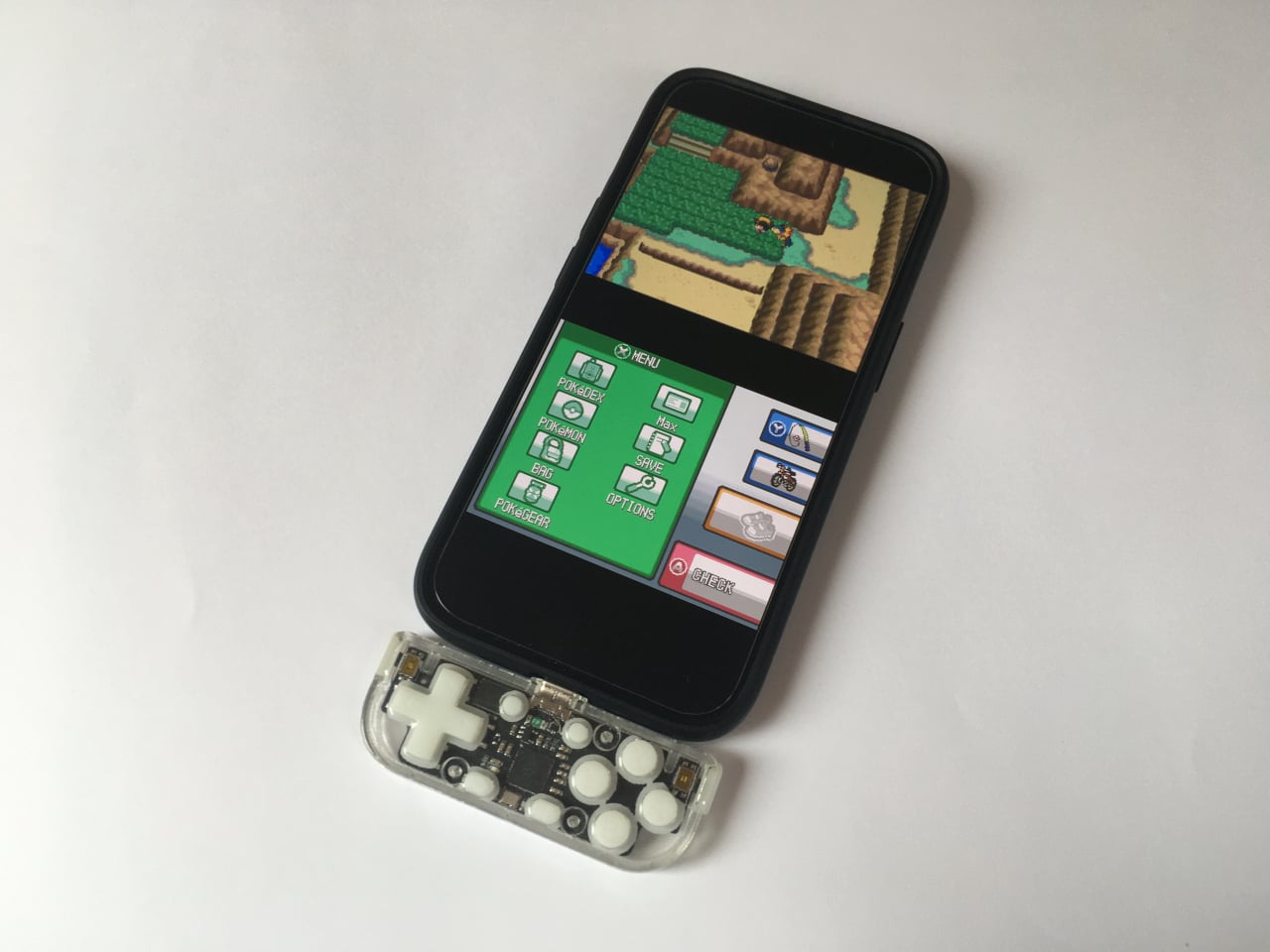Compex electrical muscle stimulator review: Can it help you recover from distance running?
While marathons and other distance running events bring a massive endorphin rush, they can also make the body feel very stiff, tense and injury prone. When I heard that there was a pocket-sized device that could help me warm-up, recover and reduce the amount of time I spend on the injury bench, I couldn’t wait to try it. It’s important to wear both devices for the Compex mini to function correctly Compex Mini: £259.99 BUY NOW The Compex mini muscle stimulator with TENS is used by CrossFit athletes such as Mat Fraser, one of the fittest men in the world, UFC stars Ashley Yoder and Adrian Yanez as well as marathon runners, cyclists and triathletes from around the world. It provides Electro Muscle Simulation (EMS) to make the muscles contract and relax, to promote relaxation and rehabilitation. The first “Computerised Muscle Pocket Exerciser” launched in 1988, since then Compex has become one of the world leaders in portable muscle stimulators which can help improve performance and recovery in sport. If you’re actively in pain, the Compex Mini has a TENS function to block pain signals to the brain and stimulate the release of endorphins – the body’s natural painkillers. Through an app on your smartphone, you can choose how you want to feel and the Compex Mini will stimulate your muscles to warm you up, help you cool down or add an extra level of resistance to strength-training workouts. To find out whether it was as easy to use as it sounded, I decided to test the device on different parts of my body that were feeling the effects of pounding the pavements. How I tested As a marathon runner who regularly clocks up 20km at the weekend, 8-10km a few days each week, and a 5km threshold session, I’m no stranger to the aches and niggles that come with pushing the body. Lately, a tight Achilles tendon causing a calf niggle has been bothering me, so I was looking to see whether the Compex Mini EMS with TENS could help with that, plus help me warm up better so that I don’t injure other areas. The Compex Mini can work wonders on calf pain in runners Compex Mini: £259.99 BUY NOW To test it thoroughly, I experimented with its various programmes, including warm-up, active recovery, and muscle relaxation, over a two-week period. For the warm-up programme, I used the device prior to my workouts, applying it to key muscle groups to evaluate its ability to stimulate and prepare my body for exercise compared to stretching alone. The active recovery programme was tested post-workout on sore and fatigued muscles to determine how effectively it reduced stiffness and promoted recovery. I also used the muscle relaxation programme in the evenings, targeting areas prone to tension, such as my shoulders and lower back, to assess its ability to alleviate discomfort. Focusing on the set-up, ease of use of the companion app and the quality of the pads and electronic parts, I gave the Compex Mini a score out of 5 to express its overall value for money. Navigate this article Full review The Verdict FAQs Compex Mini Review Pros: Compact size Travel case for ease of storage Adjustable intensity so you can tailor it to your needs Preset programs are easy to use Cons: Basic app Awkward to run with Instruction manual is brief: could have explained more Rating: 4/5 When the Compex Mini EMS with TENS device arrived, I was immediately struck by how compact the packaging was. The box itself is no bigger than a postcard, giving it a premium feel without being bulky. Inside, everything is neatly organised in a zipped carry case, which is perfect for throwing into a gym bag or storing away neatly at home. A handy travel case keeps the Compex Mini equipment well-organised Compex Mini: £259.99 BUY NOW The kit includes two small EMS devices, electrode pads, a charging cable, and a user manual. Charging them up was straightforward and surprisingly fast – it only took 45 minutes to get a full charge and then I was ready to get started. However, the excitement of unboxing was slightly dampened when it came to setting it up. To start a programme, both devices need to be attached to your body and powered on—if only one is attached, the device won’t work. You can use the Compex Mini whenever you have a spare few minutes in the day Compex Mini: £259.99 BUY NOW This took me a bit of trial and error to figure out, and I found it slightly fiddly to position both units and ensure they were properly connected via Bluetooth to my smartphone. The Compex Mini EMS with TENS offers six programmes: warm-up, strength, resistance, endurance (which can be used while running), active recovery, and pain relief with TENS. Over the two weeks, I tested each programme to see how it performed. The warm-up programme was a great addition to my pre-run routine. I used it on my calves and hamstrin

While marathons and other distance running events bring a massive endorphin rush, they can also make the body feel very stiff, tense and injury prone.
When I heard that there was a pocket-sized device that could help me warm-up, recover and reduce the amount of time I spend on the injury bench, I couldn’t wait to try it.

Compex Mini: £259.99
The Compex mini muscle stimulator with TENS is used by CrossFit athletes such as Mat Fraser, one of the fittest men in the world, UFC stars Ashley Yoder and Adrian Yanez as well as marathon runners, cyclists and triathletes from around the world.
It provides Electro Muscle Simulation (EMS) to make the muscles contract and relax, to promote relaxation and rehabilitation.
The first “Computerised Muscle Pocket Exerciser” launched in 1988, since then Compex has become one of the world leaders in portable muscle stimulators which can help improve performance and recovery in sport.
If you’re actively in pain, the Compex Mini has a TENS function to block pain signals to the brain and stimulate the release of endorphins – the body’s natural painkillers.
Through an app on your smartphone, you can choose how you want to feel and the Compex Mini will stimulate your muscles to warm you up, help you cool down or add an extra level of resistance to strength-training workouts.
To find out whether it was as easy to use as it sounded, I decided to test the device on different parts of my body that were feeling the effects of pounding the pavements.
How I tested
As a marathon runner who regularly clocks up 20km at the weekend, 8-10km a few days each week, and a 5km threshold session, I’m no stranger to the aches and niggles that come with pushing the body.
Lately, a tight Achilles tendon causing a calf niggle has been bothering me, so I was looking to see whether the Compex Mini EMS with TENS could help with that, plus help me warm up better so that I don’t injure other areas.

Compex Mini: £259.99
To test it thoroughly, I experimented with its various programmes, including warm-up, active recovery, and muscle relaxation, over a two-week period.
For the warm-up programme, I used the device prior to my workouts, applying it to key muscle groups to evaluate its ability to stimulate and prepare my body for exercise compared to stretching alone.
The active recovery programme was tested post-workout on sore and fatigued muscles to determine how effectively it reduced stiffness and promoted recovery.
I also used the muscle relaxation programme in the evenings, targeting areas prone to tension, such as my shoulders and lower back, to assess its ability to alleviate discomfort.
Focusing on the set-up, ease of use of the companion app and the quality of the pads and electronic parts, I gave the Compex Mini a score out of 5 to express its overall value for money.
Navigate this article
Compex Mini Review
Pros:
- Compact size
- Travel case for ease of storage
- Adjustable intensity so you can tailor it to your needs
- Preset programs are easy to use
Cons:
- Basic app
- Awkward to run with
- Instruction manual is brief: could have explained more
Rating: 4/5
When the Compex Mini EMS with TENS device arrived, I was immediately struck by how compact the packaging was.
The box itself is no bigger than a postcard, giving it a premium feel without being bulky.
Inside, everything is neatly organised in a zipped carry case, which is perfect for throwing into a gym bag or storing away neatly at home.

Compex Mini: £259.99
The kit includes two small EMS devices, electrode pads, a charging cable, and a user manual.
Charging them up was straightforward and surprisingly fast – it only took 45 minutes to get a full charge and then I was ready to get started.
However, the excitement of unboxing was slightly dampened when it came to setting it up.
To start a programme, both devices need to be attached to your body and powered on—if only one is attached, the device won’t work.

Compex Mini: £259.99
This took me a bit of trial and error to figure out, and I found it slightly fiddly to position both units and ensure they were properly connected via Bluetooth to my smartphone.
The Compex Mini EMS with TENS offers six programmes: warm-up, strength, resistance, endurance (which can be used while running), active recovery, and pain relief with TENS. Over the two weeks, I tested each programme to see how it performed.
The warm-up programme was a great addition to my pre-run routine.
I used it on my calves and hamstrings, and while it didn’t replace dynamic stretching entirely, it left my muscles feeling more activated and ready to go.
The endurance programme intrigued me, as I liked the concept of making my slow twitch muscle fibres work harder to test endurance levels.
However, wearing wires and pads during a run wasn’t as practical as I’d hoped as people either stared at me or stopped me to ask what I was wearing as soon as I was out of my front door.
After 20 minutes I gave up as talking to people slowed me down and I think this mode would be more suited to treadmill sessions or those who don’t mind drawing attention in the local park.
Post-run, the active recovery programme was where the device truly shone.

Compex Mini: £259.99
After my weekend 20km run, I used it on my tight calves and quads, and I noticed reduced soreness the following day compared to my usual foam rolling routine.
Similarly, the pain relief programme using TENS worked wonders on my Achilles tendon niggle.
The gentle electrical pulses helped ease the discomfort, making it my favourite feature of the device.
The strength and resistance programmes were less relevant to my running-focused training, but they did feel like they were doing something when applied to my quads and glutes.
These programmes might be more beneficial for athletes looking to build muscle tone or supplement their strength training than runners.
Comfort-wise, the Compex Mini is fine when you’re seated or lying down, but wearing it while moving around on a run felt cumbersome.
The adhesive pads are super sticky and I think they’d be painful for people who have lots of body hair.
Connectivity was reliable, with the app providing clear instructions and programme options, but I did find it a little basic given that the Compex mini costs £259.99.
With a square layout, you select different programs and then there’s just a start and a stop feature.
The Therabody massage gun, which is a similar price, has a much superior app.

Compex Mini: £259.99
Also, I couldn’t figure out how to use the pads without my phone, which meant that I had to check my phone a few times to make sure it was still functioning as it should.
The more I do this, the more I’d trust it but it did slow me down.
For serious athletes who have a treadmill and home gym set up, this is a fantastic piece of kit as you have access to a host of features that most recovery devices don’t offer.
Using it for training should help you improve your fitness as well as speed up recovery time between sessions.
When just used for pain, it is expensive given that massage guns tend to be cheaper, but it eased the pain in my calf brilliantly.
Compex Mini: The Verdict
While I wasn’t particularly impressed by how long it took for me to figure out how to use the Compex Mini, the more I used it the more I liked it.
Time-wise, it takes just as long to use for a warm-up as a traditional stretching session but you can do other things at the same time, which would make it appealing for people with busy lifestyles.
Priced at £259.99, it’s more expensive than your average massage gun, but it’s stimulating your muscles on a deeper level.
Rather than battering them with high-frequency vibrations, it’s gently triggering the muscles to contract which helps with growth and muscle tone as well as a faster recovery time.
Not only that, but I found the pain relief feature to be very effective on the niggles in my calf.
I liked that the Compex Mini is small and easy to store so I can whip it out for a quick session if I’m watching a box set or football on the TV in the evenings.
Once out, it’s very attention-grabbing with all the wires and pads, so I didn’t enjoy using it for workouts unless I was in the comfort of my own home.
As I don’t have a treadmill, it was hard to test the endurance feature of the device as I felt like I got too many strange looks when I wore it in my local park.
I’ll likely keep using the Compex Mini for pain relief in the future, and perhaps wear it for some runs outside if I’m feeling brave.
Compex Mini FAQs
Navigate the FAQs by clicking the links below.
- What is EMS?
- Where do you place the Compex Mini pads?
- Is the Compex mini waterproof?
- How often do you need to charge the Compex mini?
What is EMS?
EMS stands for Electrical Muscle Stimulation.
It involves sending small electrical impulses to targeted muscle groups, causing them to contract and relax.
This process helps improve blood flow, speed up recovery, reduce muscle soreness, and can even aid in building strength and endurance.
Where do you place the Compex Mini pads?
The Compex Mini pads can be placed on various muscle groups depending on the program you’re using.
For runners, common placement areas include the calves, hamstrings, quads, and glutes.
The user manual includes diagrams to help you position the pads correctly for each programme, whether you’re warming up, recovering, or targeting pain relief.
Is the Compex mini waterproof?
No, the Compex Mini is not waterproof.
While the device is compact and portable, it should be kept dry and away from water to prevent damage.
This means it’s not suitable for use in wet conditions or during activities where you might sweat excessively.
It’s recommended to store the device in its zipped carry case to keep it safe and protected when not in use.
How often do you need to charge the Compex mini?
The Compex Mini has an impressive battery life and typically requires charging every few days, depending on usage.
On average, I charged it once every four to five sessions.
It’s easy to see when it needs a charge as three lights on the top indicate a full charge and one light means it will need some more power soon.
The device comes with a USB charging cable, making it easy to recharge from a laptop, power bank, or wall adapter.
For more sports, health and fitness content and buying guides, check out our dedicated talkSPORT shopping hub.



































































